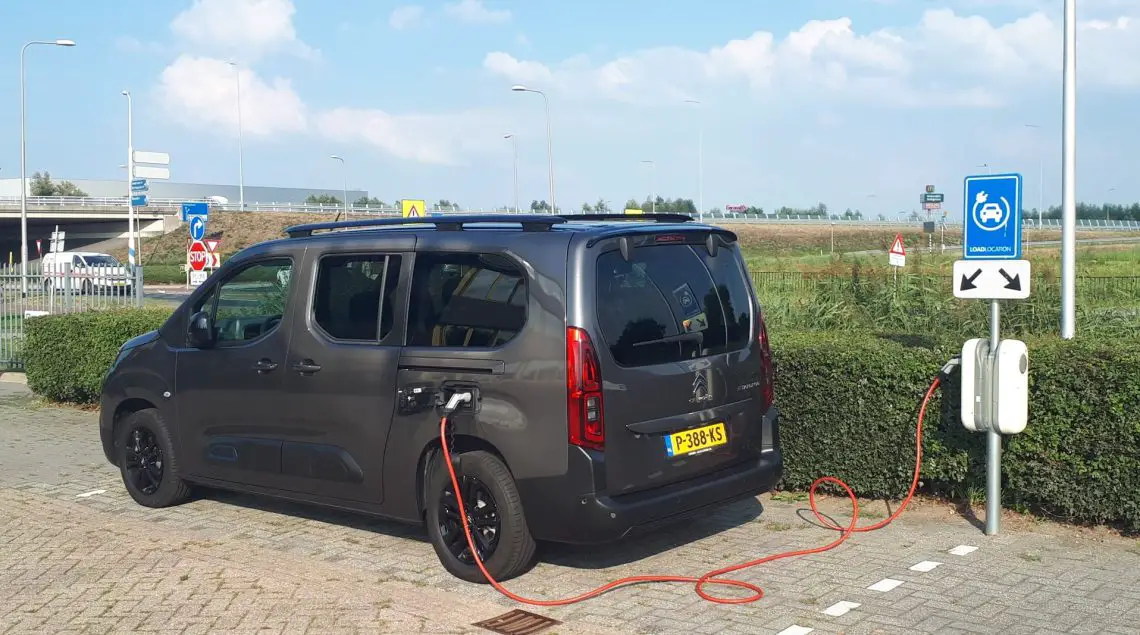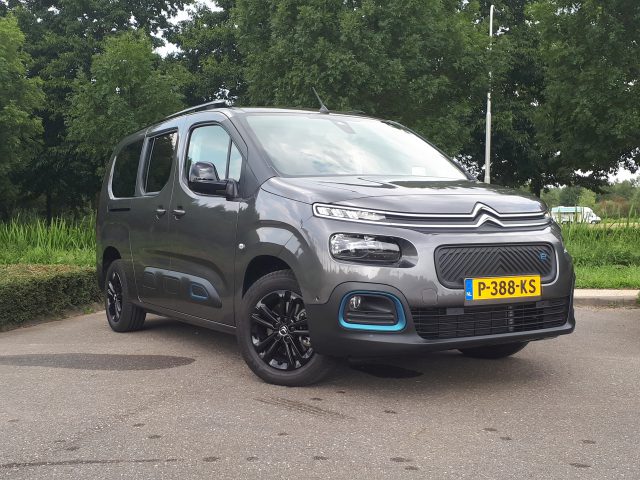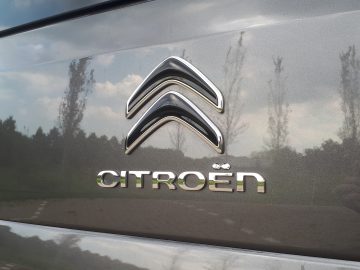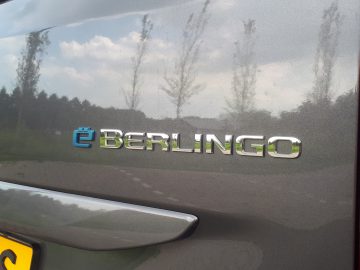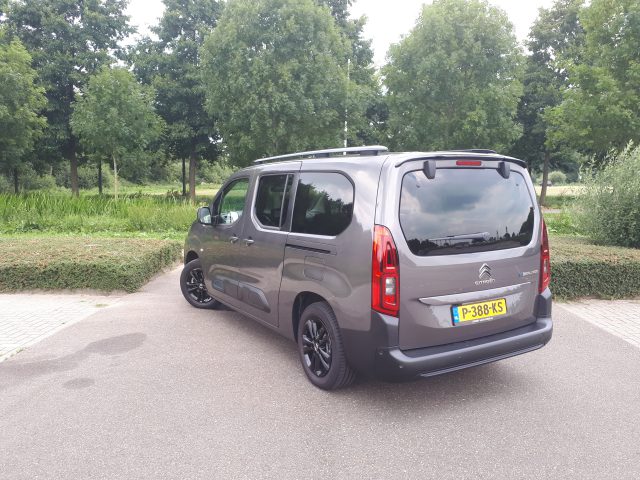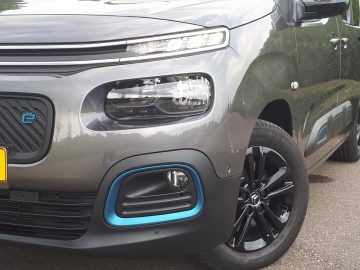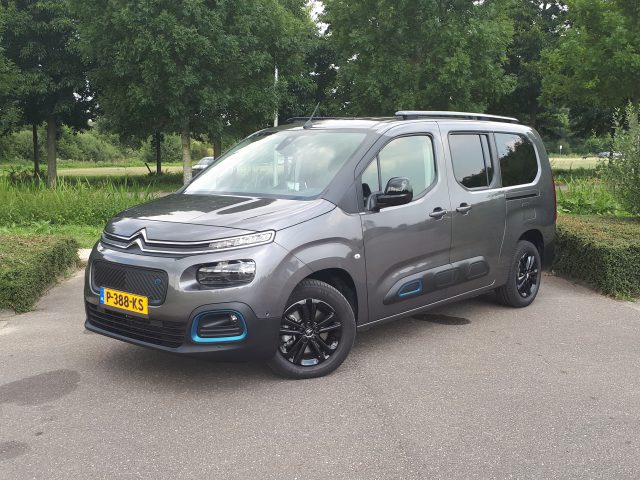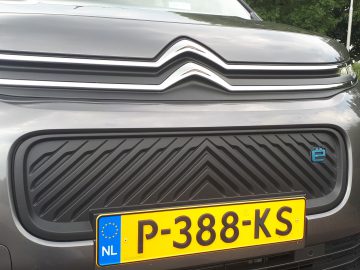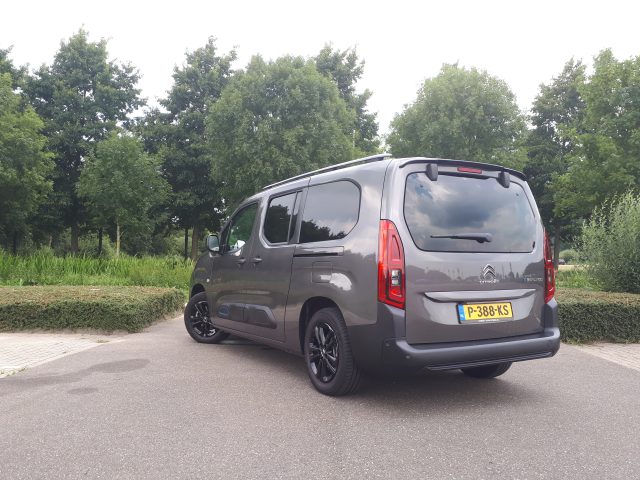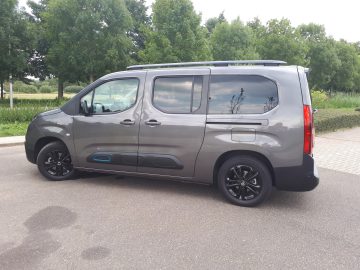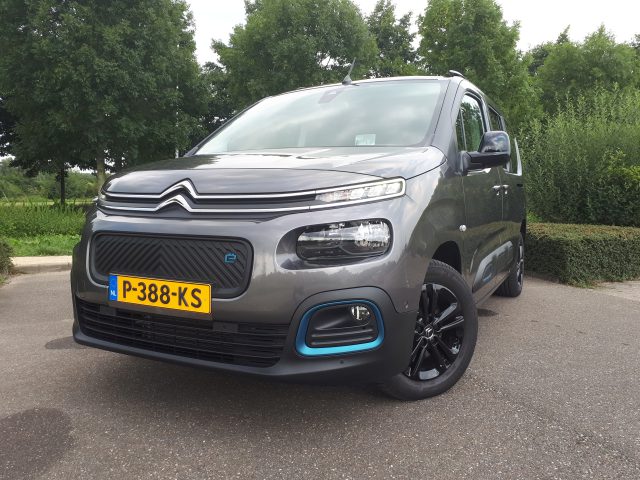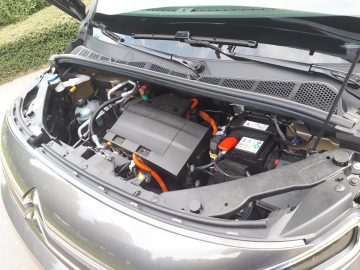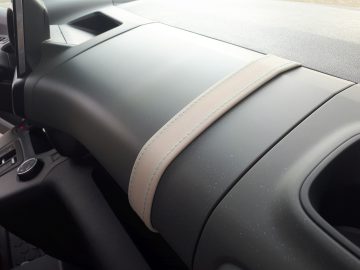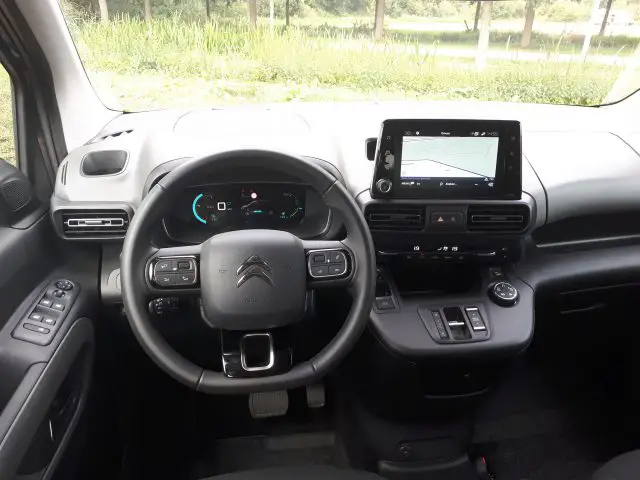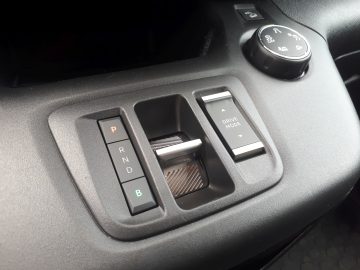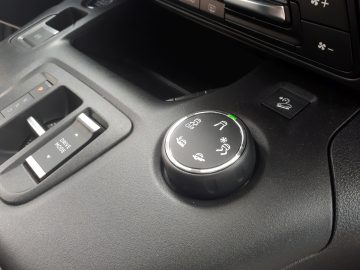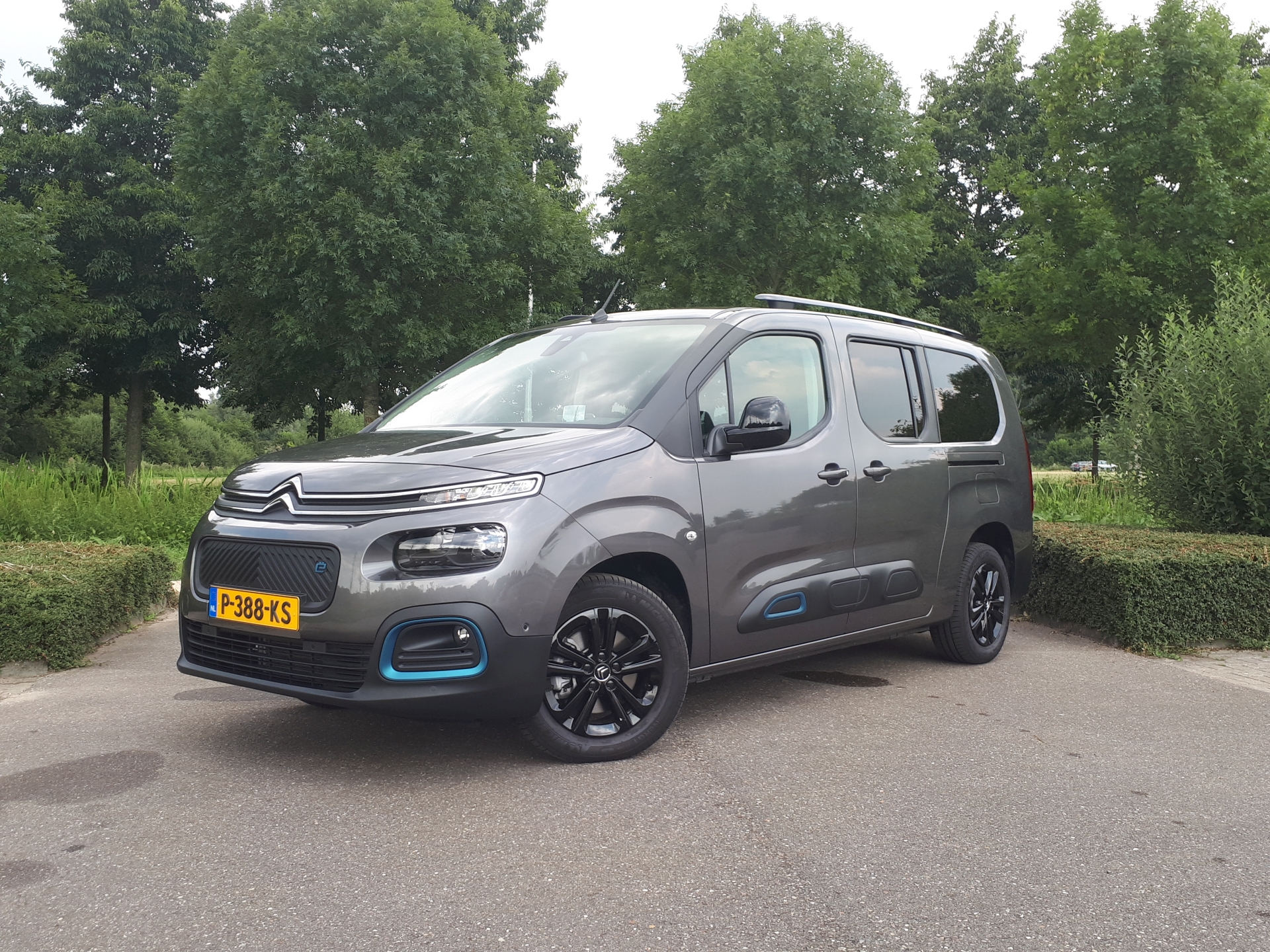Review – Citroën e-Berlingo (2022)
Since the end of last year, the passenger version of the Citroën Berlingo has only been available in the Netherlands as a fully electric Citroën e-Berlingo. That helps bring down the average CO2 emissions of Citroën’s offerings further, but is the Berlingo in all-electric trim still such a strong offering? We’ll find out.


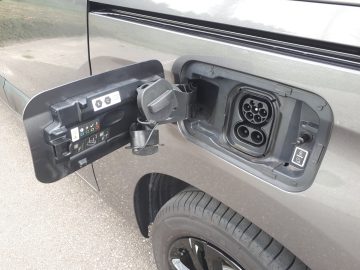
Just as practical
With all-electric drive, the Citroën e-Berlingo is fortunately unabatedly practical. As with the earlier fuel version, this is due to its origins as a commercial vehicle. The van version of the e-Berlingo has also been developed so that the electric powertrain does not have a negative impact on cargo space and capacity. Only the towing weight is less, which is still only 750 kg.
However, five to (optionally) seven people still fit in and, depending on the version (five or seven seats, ‘short’ or XL), 597 to 912 liters of luggage still fits in the back. With the seats folded down, that’s even a maximum of 1,672 liters. Furthermore, there are still numerous storage compartments and options. You can find out more about the many practical features of the Citroën e-Berlingo in our earlier driving test with the fuel version. Now we are focusing mainly on the electric drive.

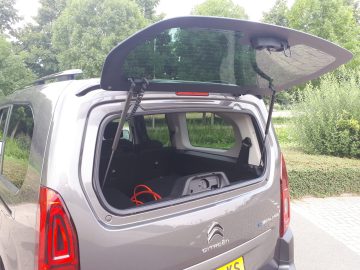
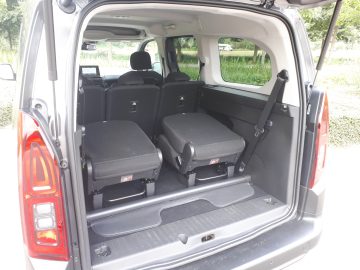
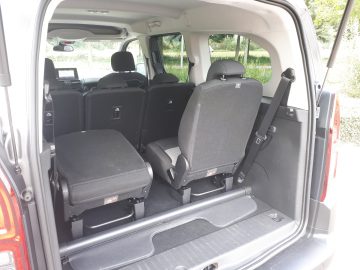
On the road with the Citroën e-Berlingo
The Citroën e-Berlingo doesn’t drive much differently than the fuel version. Actually, even finer, thanks to the smooth drive and different weight distribution. While it is heavier than the equivalent fuel version (over 1,700 kg versus over 1,400 kg), the center of gravity is lower thanks to the battery. As a result, the e-Berlingo is just a bit tighter on the road; the body tilts less in bends. You do notice the extra weight in the suspension comfort, in the sense that the car will sometimes sway slightly on bad road surfaces. It is not really disturbing, by the way.
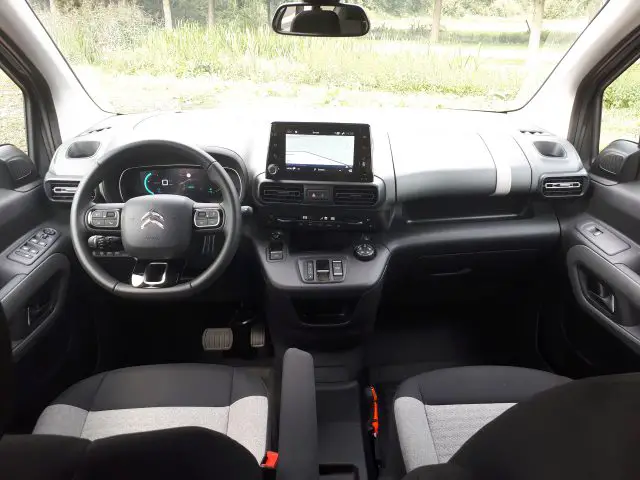

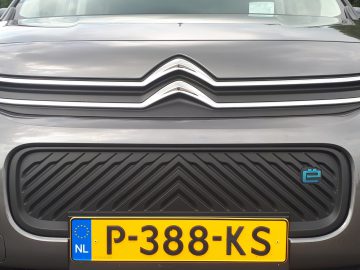
Theoretical range Citroën e-Berlingo
On paper, the Citroën e-Berlingo in the XL version we tested has a range of 278 km (WLTP). When leaving with a full battery, the trip computer reports a range of over 260 km every time, which is nicely close. Once on the road, the miles do run down quickly, especially on the highway.
Citroën e-Berlingo range in practice
We didn’t completely drain the Citroën e-Berlingo’s battery on a single trip, but if we calculate the discrepancy between miles driven and range consumed, in practice you should expect a total range of about 220 to 240 kilometers. That depends a bit on whether you drive on the highway or via N-roads and how often you have to brake in the process (and thus recover energy). If you drive almost exclusively in urban (traffic jam) traffic, then you should probably actually be able to get that 260+ kilometers. By the way, we did not test the e-Berlingo with full luggage.
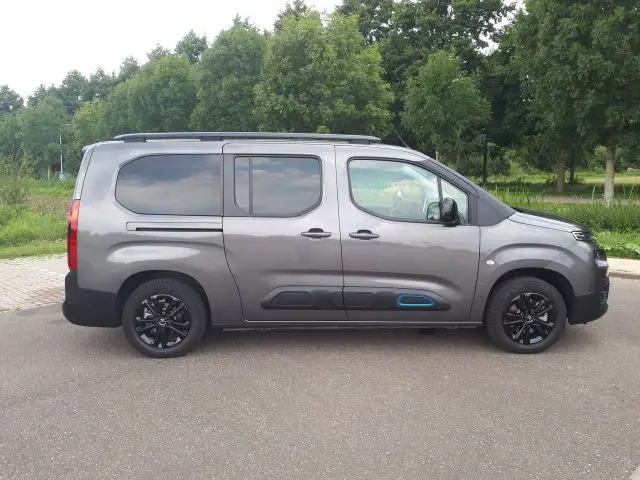
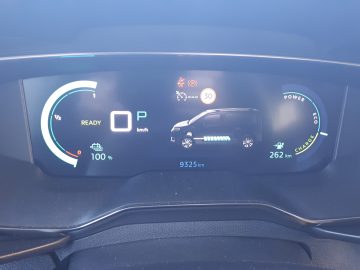

The ‘charging cable management’
Although the Citroën e-Berlingo is a practical space wonder, we did find an area for improvement in just that point: the so-called charging cable management. In plain English: where do you leave the charging cables? Many electric cars have a storage compartment in the luggage compartment(floor) for this purpose, but that is missing here. Citroën does supply a charging cable bag. In theory, this means the charging cable is stored compactly, but let’s face it: you’re not going to try to accurately get the cable into that bag after every charging session. So in practice, the cable is swinging loose in the luggage compartment. Then, in this case, we also received an additional charging cable, for charging at a household outlet. That’s quite a cable mess in the back.
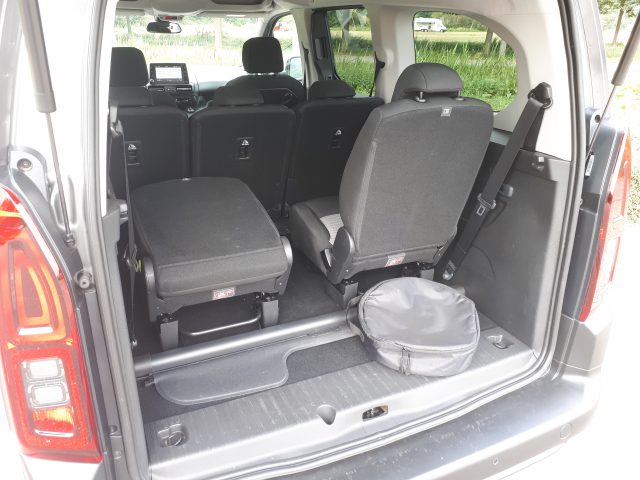
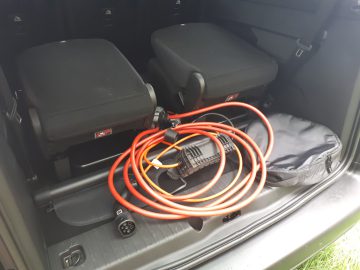
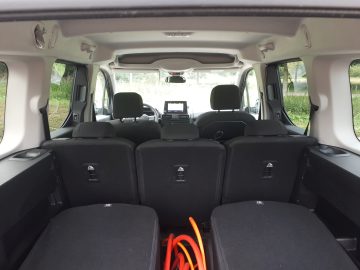
Prices Citroën e-Berlingo
The Citroën e-Berlingo is currently available from 38,715 euros. For that, you get the “short” version with equipment level Live. For more luxury, there is also the choice of Live Edition, Feel and Shine levels. The latter comes from 42,940 euros and the other two are in between. Prefer more space? Then there is the extended e-Berlingo XL starting at 44,920 euros. A considerable price difference, but then you also have the Feel equipment level. There are no other versions for the XL. You can find the full range of versions and associated equipment at www.citroen.nl.
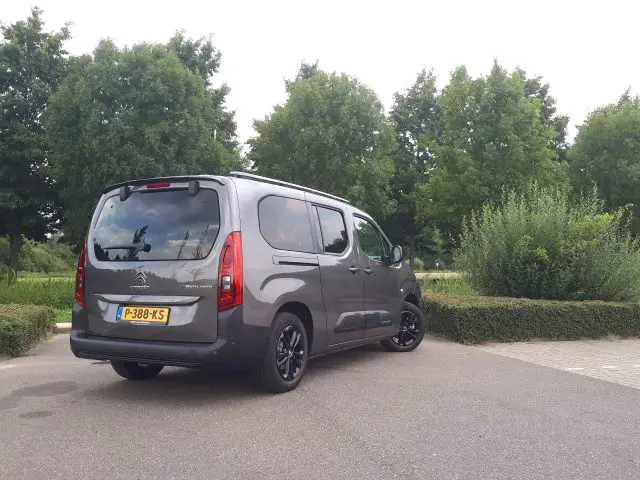
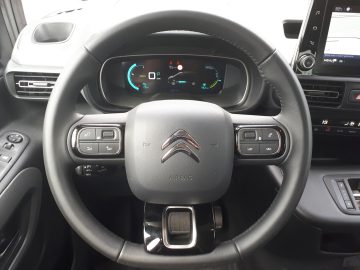

Conclusion
On its own, the all-electric Citroën e-Berlingo is a very strong offering. It is undiminished practicality, so you can effortlessly travel with many people and/or luggage without needing a large SUV to do so. In addition, the e-Berlingo also drives more pleasantly than the fuel version, thanks to its smooth drive and lower center of gravity.
The only real drawback of the Citroën e-Berlingo is its somewhat limited range. It just has to fit with how you want to use the car. As long as you can start each trip fully charged, the range is sufficient for the vast majority of your trips. We had no trouble at all with it during the test week. However, a car like the Citroën Berlingo is also bought to enjoy traveling. With the growing network of (fast) charging stations, that shouldn’t be a problem either, but especially in foreign countries you will have to plan your trips extra carefully.
Although Citroën still sees “adventurous families” as the main target group for the Berlingo, it is somewhat less interesting for them than before given its relatively limited range. However, as far as we are concerned, the Citroën e-Berlingo is a very interesting offering for cab companies and, for example, providers of (other) shuttle services. In the end, though, the Citroën e-Berlingo remains simply a comfortable and fine driving car in which all passengers and their luggage fit effortlessly.


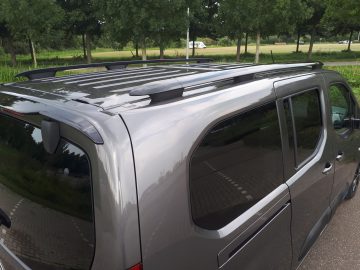
The e-Berlingo from other brands
For completeness, the Citroën e-Berlingo is also available as a nearly identical Peugeot e-Rifter, Opel Combo-e Life and Toyota ProAce City Verso. The Toyota version is the only one still liveried with fuel engines and (for the time being) has precisely no electric version. These models will soon be joined by the Fiat e-Doblo.
(Few) direct competitors
The four/five-legged family now has the upper hand in their segment more or less alone, because direct competitors such as the Ford Tourneo, Renault Kangoo and Volkswagen Caddy no longer have their passenger versions delivered in the Netherlands. Mercedes-Benz does offer the Citan Tourer related to the Kangoo and soon the more luxurious T-Class.
